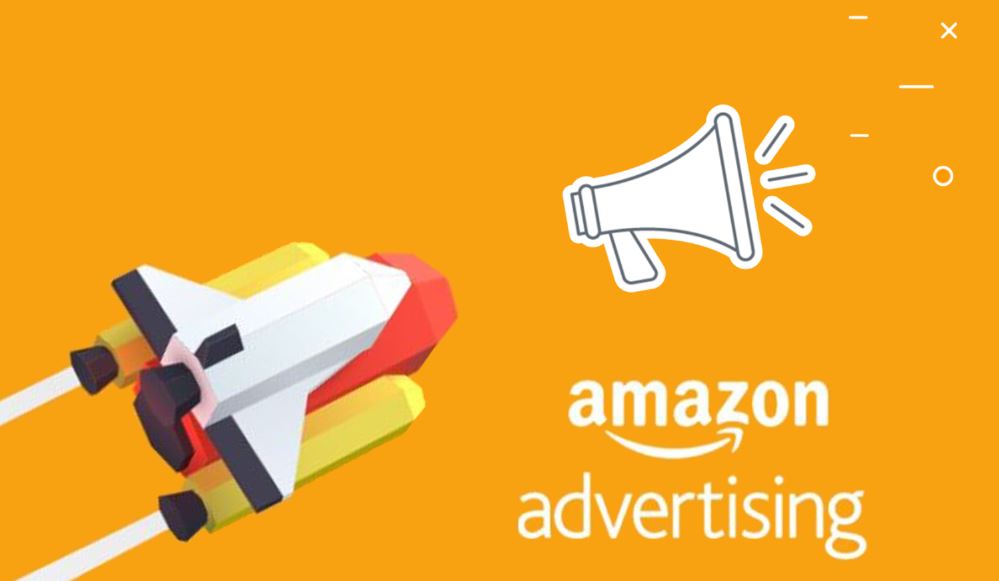Higher-scale profit
This is a strategy for when your published material lets you start turning the tap. Impressions are the foundation of success with Amazon ads. By themselves, they’re meaningless, but in tandem with advanced optimization tactics, they’re the raw material of success.
We’ll talk about optimization later. Enough to say here that skillful optimization is like adjusting water quality. Your tap can gush muddy, bacteria-infested water straight from a dam, or purified water – fresh and ready to drink.
To utilize this strategy you’ll need what’s lacking in the first: a long series or a boxed set. You may also have a large backlist and a good conversion rate. If so, your results will be even better.
There’s a myth that a click is a click is a click. People who’ve never been taught how to optimize properly tend to believe in it. The theory proposes that no matter the source of the click, once you have it then you have the same chance of converting as any other click. This, proponents of the theory say, allows you to reap greater profit because you can target low-quality click sources, and do it cheaply. It’s a quantity over quality scenario.
I’ll have more to say on that in the optimization segments of this book. For now, think on this. If that theory were correct, conversion rates of different ads would all end up similar.
And they don’t. Talk to anyone who ever runs PPC ads and ask them if conversion rates for different ads are the same, and listen to them laugh.
The click is a click is a click theory is wrong. Nor is it supported by genuine PPC experts.
As always in this series, I encourage you never to take anything at face value. Research and verify.
A good starting point on this topic is a Google search for “Why PPC conversion rates differ” or
“How can I improve my ad conversion rate?”
Look for articles by people who run PPC businesses professionally.
This myth, widely propagated in some indie author circles but non-existent in all other fields of PPC advertising (Facebook ads, Google ads, and even Amazon sellers of products besides books) is killing you. Big time.
Don’t take my word for it. Take nobody’s word for anything. Search and verify. Find the confirming patterns.
What has any of this got to do with the subject at hand of higher-scale profit?
When your ads are optimized properly, you have a higher conversion rate and this means you spend less to get a sale. Each click that doesn’t convert costs you money. Clicks that do convert make you money. When you tilt the balance in your favor, you’re profiting.
Better still, optimizing allows you to bid higher. The money you save by not paying for lowconverting ads can be redirected to high-converting ads. This turns on the tap and enables you to start scaling up.
The click is a click is a click theory requires low bids over wide targets to work. This tries to make up for low conversion rates. But it turns off your ability to truly scale. You only get what you pay for, and if you bid low you can’t successfully target quality keywords that convert well and at volume.
You can optimize with the small-scale profit strategy too. In fact, that’s key to making it work. But without the leverage of a long series or the like, you still can’t turn on the tap. Turning on the tap enables you to find a good thing and make it better, stronger, faster.
Okay, that was a retro reference. Fans of the Six Million Dollar Man will have gotten it. But the reference is apt. Optimization of ads for a book you can leverage to sell more books is the strategy for higher-scale profit. Your ads will perform better.
Breaking even brings better profit
So far so good. The two previous strategies are acceptable. There’s nothing wrong with them, assuming you want to profit from your ads.
But there’s another option. And it’s better still. It turns the Six Million Dollar Man into the Six Billion Dollar Man. Or maybe even Chris Hemsworth.
I said earlier that you have to dig deeper and “profit” was too wishy-washy an aim. Here is the proof of it. Be warned though, this section is one of the most complex in the book. I could leave it out, but that would be doing you a disservice. You deserve to know the truth, or at least the truth as I see it.
What’s better? Profiting off your ads? Or profiting off your books?
The key to arriving at an answer here is an understanding of the Amazon ecosystem. Amazon reward sales, and they punish a lack of sales. They do this because they always put the customer first, and try to show them what they’re most likely to buy.
Amazon’s recommendation engine is vast and multifaceted. And it never rests. Whenever the customer is there, it’s there. If you sell in a tiny way, just a book a week, that recommendation engine works in a tiny way. If you sell in a big way, the floodgates open and the recommendation engine promotes you everywhere. It’s like a politician at election time. It’s kissing babies, making speeches, smiling and shaking hands without stint.
What exactly is the recommendation engine though? Amazon sends millions of emails a day to subscribers. Millions. Then there’s the “also-bought”, “also-viewed” and “what other items do customers buy after viewing this” item rows. These are the main ones, but there are others. These all form the working cogs of the engine.
If you start a trickle of sales, the recommendation engine responds. Where there’s one, there’s the other. If you’re advertising, and getting sales off your ads, then you’re getting sales off the recommendation engine too.
And this is the interesting part. Obviously, there’s a lot of variation, but authors often report that only about 30% of their revenue comes directly from ads. That means 70% of their income comes from organic sales.
This certainly matches my personal experience, and it matches what Amazon sellers of products other than books also report.
The use of this information? Ads are a lever. Sales from ads stimulate organic sales through the recommendation engine. And organic sales are roughly double ad sales.
This is why you generally don’t want to profit off your ads. Going to the break-even point instead puts more pressure on the lever. This extra pressure boosts organic sales even further, where you make more money than you do off ads.
If you can run break-even ads, the risk of this strategy is extremely low. You’re running a costneutral scenario on the ads, and bringing in sales organically. Should you choose to, you can push it a bit further by running ads at a slight loss, so long as they still convert really well.
When you’re in the break-even situation, what you want to do is scale as high as possible. But scaling is very, very hard. For this reason, I give it its own chapter later.
This is where things get even more complex. Some of you have been taught that the way to measure profit from your ads is to subtract ad costs from total income. The balance is your profit, generated by ads.
This method is problematic and pays no attention to organic sales. It ignores them. But let me ask you this. If you can run an ad on Amazon that sells your book, why won’t people buy the same book when Amazon recommends it via also-boughts, emails and the like?
The truth is, they do buy it. But you need to stimulate that recommendation engine first. You can switch on ads in hours. You can switch them off in seconds. The recommendation engine can take weeks to ramp up. But once you get it going, it chugs along very consistently. But if you turn off your ads, it will begin to stall. Or not. It depends on how well the book resonates and sells organically.
How many of you have kept paying for ads and keywords that were losing you money because organic sales were coming in separately and being falsely attributed to the ads?
Attributing all profits to ads and ignoring organic sales prevents you from working out which ads, and the keywords within them, are duds. Why optimize when they all seem to be working well?
This approach will cost you money, either by a small amount or by the truckload. And if you learned it from a book or course, ask yourself this question. Is it in the interests of the author or teacher that their methods appear as successful as possible? If your answer is yes, then from their point of view, attributing all sales to ads makes a certain kind of sense. Yes?
The justification put forward for calculating ad effectiveness this way is that Amazon’s reporting of ad sales is unreliable. This claim has gained wide currency. There are certainly issues if your book is enrolled in Kindle Unlimited, because borrows or page reads generated by ads aren’t (currently) reported. There’s a straightforward way to factor that in though. As for sales? I don’t think the reporting is unreliable at all. I believe it’s laser accurate. If Amazon can land a book at your front door by drone, I think they know when someone clicked an ad and bought a book. And directors would face possible jail time for fraud if they deliberately provided dodgy sales figures.
What do you think?
All through this series, I have a motto. Dig deep. Find the truth. Question standard practice – seek best practice. Digging deeper now, I suggest that there are three layers of sales going on in the Amazon ecosystem.
The first you can attribute directly to the ads that are working. Not all will be, especially in a costeffective way. Nobody creates a bunch of ads that all work. Even PPC experts who run campaigns for multimillion-dollar companies. They’re happy if seven out of ten ads work.
The second layer you can attribute indirectly to the ads. Because the ads lifted sales rank, they kickstarted the recommendation engine. Or, if you have a mailing list and a good release strategy, they gave an increased boost to what was already happening.
The third layer is actual, real, genuine, organic sales. Depending on where you are in your career and the number of fans you have, these sales can make up a small portion or a very, very large portion of your total sales.
Attributing that third layer of sales as profit from your ads is artificially inflating their performance. Doing so causes you to keep poorly performing ads that are siphoning off your cash like a petrol thief in the dead of night.
But what of the indirect layer? Those sales come about because of the ads. It was the ads after all that lifted your sales rank and caused Amazon to start sending out emails with your book in it, or increase the emails they were already sending out.
This is a good point. I don’t disagree with it. But if you’re running ten ads, which ads were responsible for this and which weren’t? If each ad has a hundred keywords in it, again, which ones are good and which ones duds?
The central word here is indirectly. Can we pin things down better than that and optimize profits in a targeted way instead of generalize by subtracting expenses from income?
Yes we can.
The direct cause of starting or increasing recommendations is sales rank. When this goes up, the recommendations increase. When this goes down, the recommendations decrease.
To work out which ads are responsible for this, you have to analyze them and pinpoint which ones influence the sales rank in a cost-effective manner. This can be done. It can be done fairly easily, and doing so will allow you to delete dud ads and keywords.
This, in turn, allows you to direct more money toward effective ads and keywords instead of funding them all, winners and losers alike.
We’ll go into how to calculate ad performance in detail shortly. For the moment, it’s back to the core strategies.




